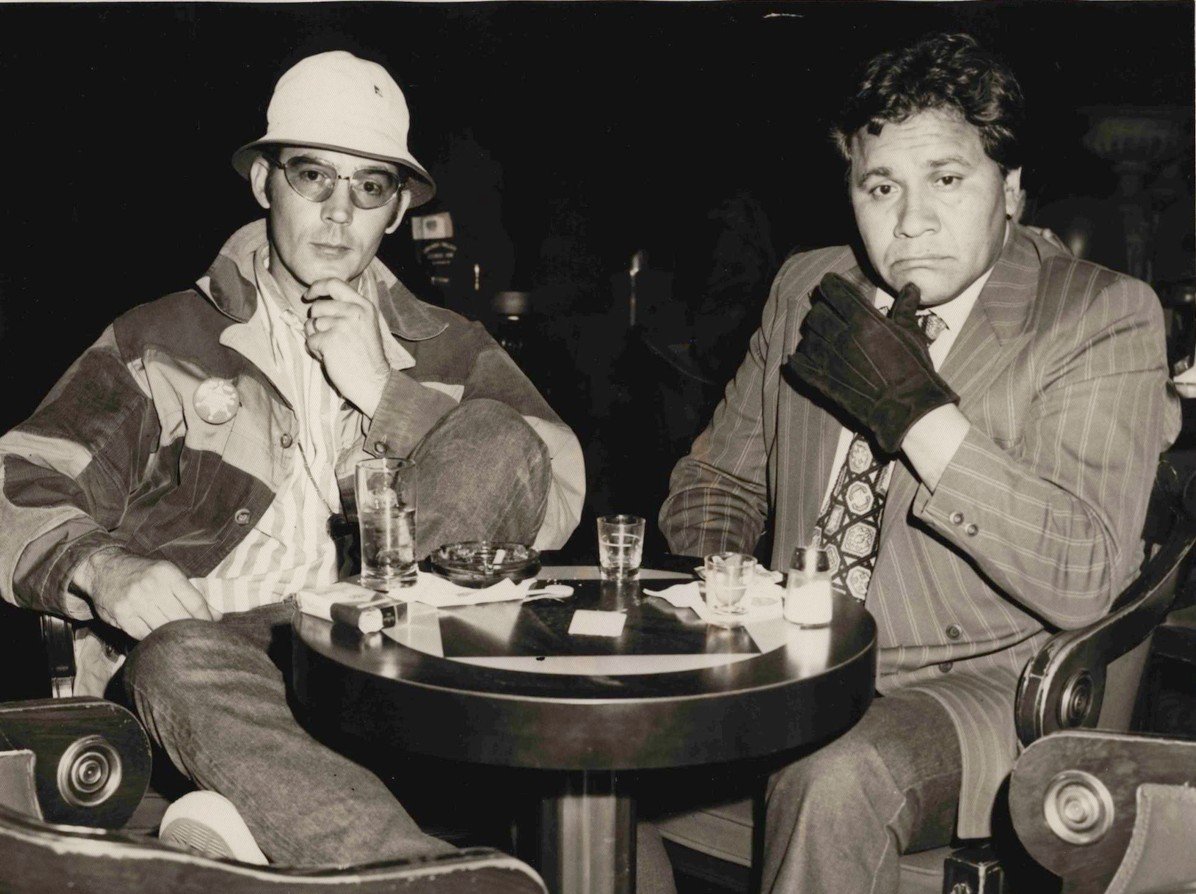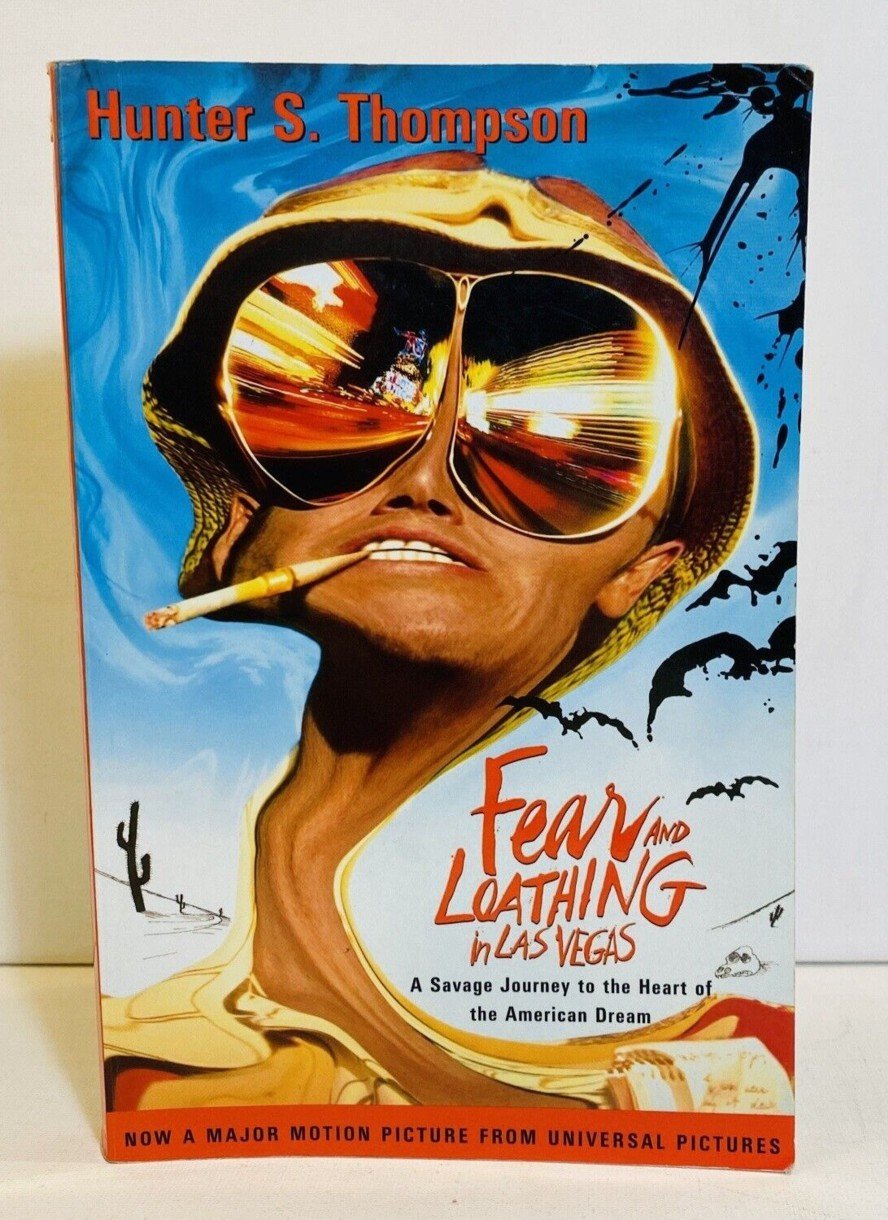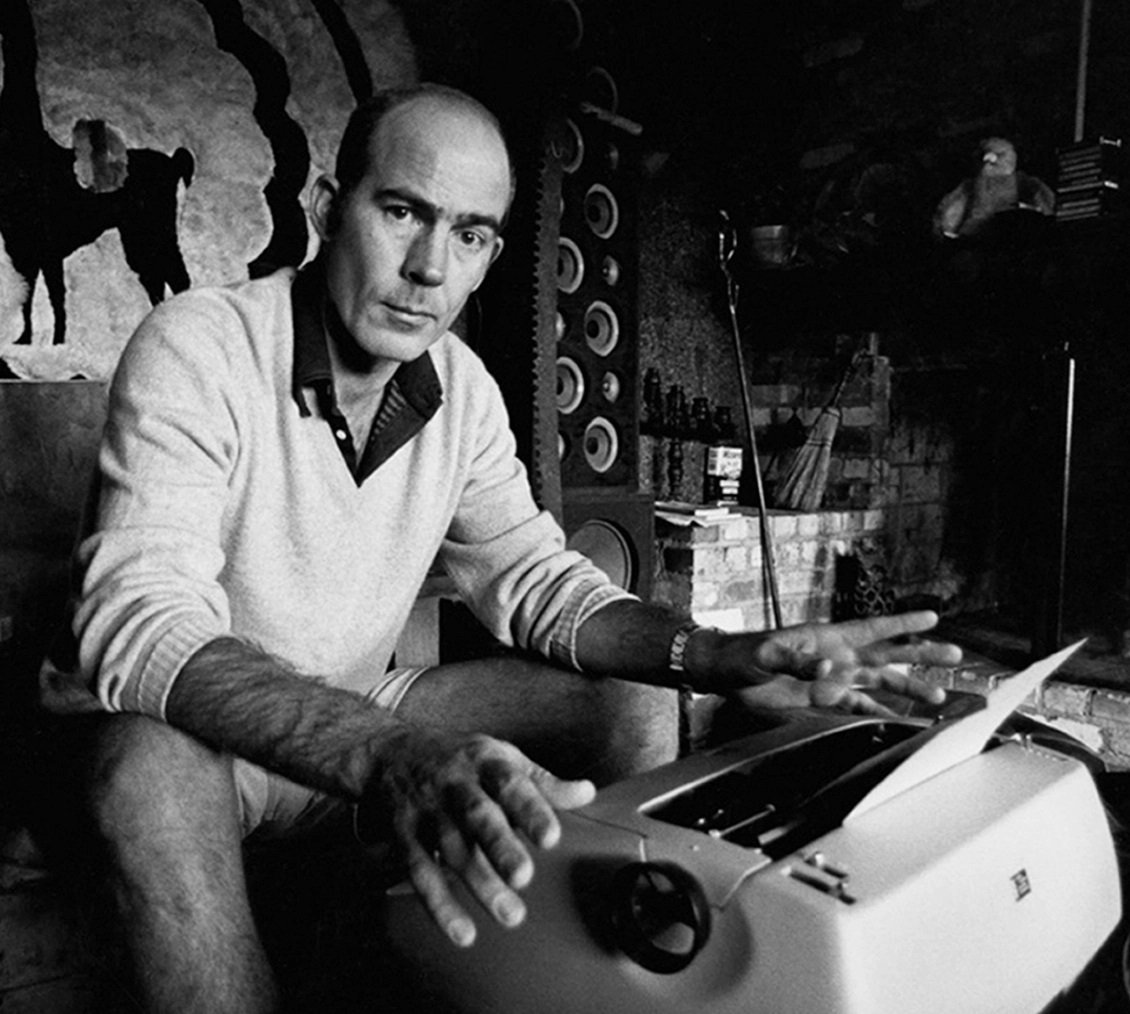Vegas Myths Re-Shattered: ‘Fear and Loathing’ Really Happened

Published on: November 24, 2023 at 08:04 pm.
Last updated on: 4 December 2023 at 06:47 h.
Editor’s note: “Vegas Myths Busted” posts new entries every Monday, with a bonus Flashback Friday release. Today’s post in our ongoing series originally ran on March 3, 2023.
Known as Hunter S. Thompson, who died by suicide 18 years ago last Monday, called him a gonzo journalist. Therefore, many of his fans look at his book, Fear and Loathing in Las Vegas, As a journal of events that actually happened.

In fact, it’s not their fault, as Random House published the author’s magnum opus in 1972 under the general nonfiction category. But Thompson never claimed that any of the events described in it were true.
The fact that none of its main characters were real people should have been the first clue. The story is told by Raoul Duke, whose traveling companion/advocate is Dr. Gonzo.
In real life, Thompson was hired by Rolling Stone Magazine to write a presentation about civil rights activist and Los Angeles Times Columnist Ruben Salazar, who was “accidentally” shot and killed by Los Angeles County police officers with a tear gas grenade fired at point-blank range during a Vietnam War protest in 1970. After a week or so of asking tough questions about Los Angeles, Thompson became frightened.
Thinking he might be next, he flew his main source for the story, attorney Oscar Zeta Acosta, to Las Vegas to interview him there. Sports Illustrated Thompson was hired to cover the Mint 400, an off-road stock car race around undeveloped parts of North Las Vegas from March 21-23, 1971.
Sports Illustrated He “vehemently rejected” (in Thompson’s words) what he presented as coverage of race. What was supposed to be a 250-word commentary became instead a 2,500-word rant about the death of the American dream. So, Thompson offered that instead Rolling Stone, whose editor, Jan Wenner, has scheduled a two-part run in future issues.
More than a month later, Thompson and Acosta returned to Las Vegas. They were there to cover the National Lawyers Association’s Narcotics and Dangerous Drugs conference in the second half of its convention Rolling Stone Assigned. With only a few minor edits and the addition of Ralph Steadman’s strangely hallucinogenic illustrations, the magazine series became the book that would forever associate the Thompson name with Las Vegas. He wrote most of it in a hotel room in Arcadia, California, while finishing A strange growl in AztlánSalazar’s own article Rolling Stone.
So how much actually happened in Fear and Loathing in Las Vegas: A Brutal Journey to the Heart of the American Dream? Based on interviews with witnesses and participants, the percentage was approximately 25%.

The 75% that didn’t happen
Let’s start with the legendary contents of the trunk of Thompson and Acosta’s rental car. The book includes “seventy-five pills of mescaline, five sheets of high-strength blotting acid, a salt shaker half filled with cocaine, a whole galaxy of multi-coloured uppers, lowers, screaming, laughing…a pint of crude ether and two dozen amyloids,” It all came together during a hectic night in Los Angeles
This was supposed to be the fuel for all the book’s adventures.
However, in a letter to his editor at Random House, published as a book in 1997, Fear and hate in America, Thompson admitted to no actual drug use. He wrote that the novel “was a very conscious attempt to emulate drug panics”, although it “at times brought situations and feelings I remembered from other scenes into the reality at hand”. “I never had so much respect or affection for journalism,” he later wrote to the same editor.
Much of the book’s action takes place in Room 1850 of the Mint Tower (one of 365 rooms permanently closed by new owner Binion’s Horseshoe in 2009). According to Duke’s account, he and Dr. Gonzo ran up an unpaid room service bill of $29 to $36 per hour for 48 straight hours before trashing their room and knocking out 600 bars of Neutrogena soap.
“This is something that would have been reported to me immediately, but I never heard about it,” KJ Howe, the Mint’s publicist at the time, told The New York Times. Las Vegas Journal Review In 2010. According to Howe, there was no “Mr. Heem” or another hotel executive looking for Thompson, Acosta couldn’t order a set of luggage from room service without paying, and no soap was reported stolen.
His perception of what was happening and what was actually happening were two different things. Haw said.
However, Thompson got the correct brand of soap stolen. (Millionaire real estate developer Del Webb, who owns the Mint, was also on the board of directors of the company that made Neutrogena.) Thompson’s attention to detail can lend an air of credibility to the most obvious fiction.
Another event that never happened was Debbie Reynolds’ show at the Desert Inn, at least the way Thompson reported it. In the book, Duke and Dr. Gonzo witness the opening number (a cover of a Beatles song). Sgt. Pepper’s Lonely Hearts Club Band) before they were backslid because they cheated their way free.
While Reynolds played the Desert Inn in March 1971, the singer said she had never been informed of any incident resembling this. However, she was certain of one detail that cast doubt on the entire novel: It never happened, she said royal jordanian, Did she perform? Sgt. Pepper.
Other decorations do not require witness identification. For example, Thompson was assigned to cover a district attorney conference Rolling Stone It took place in late April, more than a month after the Mint 400. However, the book places the events a week apart, and they are joined by an aborted trip to Los Angeles interspersed with a traffic stop conducted by the California Highway Patrol officer who supposedly let Thompson go after that. The author drove it on a 100 mph off-road chase, Budweiser in hand.
“You know, I feel like you could use a nap,” Thompson quoted the officer as saying.

The 25% that happened
In the 2008 documentary, gonzo, Thompson and Acosta can already be heard living out Chapter Nine as they walk into a taco stand in Boulder, Nevada during their second trip to Las Vegas.
“We’re looking for the American dream, and we’ve been told it exists somewhere in this area,” Acosta tells the waitress.
The waitress turns to the chef, thinking he has just been asked for directions to a nightclub.
She says, “Hey Lou, do you know where the American dream is?”
“This whole chapter is a transcript of that audio tape,” “Gonzo” director Alex Gibney told RJ In 2010. “So it leads you to believe that some “These things are real.”
For the final word, we’ll go to the horse’s mouth. Here’s a blurb from Thompson that was published On the original cover of the book…
“My idea was to buy a large notebook and record the whole thing, as it happened, and then send the notebook out for publication—unedited,” Thompson wrote. “But that’s a hard thing to do, and in the end, I found myself imposing an essentially fictional frame on what started out as a piece of straight/crazy journalism.”
Look for “Vegas Legends Busted” every Monday Casino.org. Visit VegasMythsBusted.com to read pre-busted Vegas legends. Do you have a suggestion for a Vegas legend that needs busting? Email corey@casino.org.





